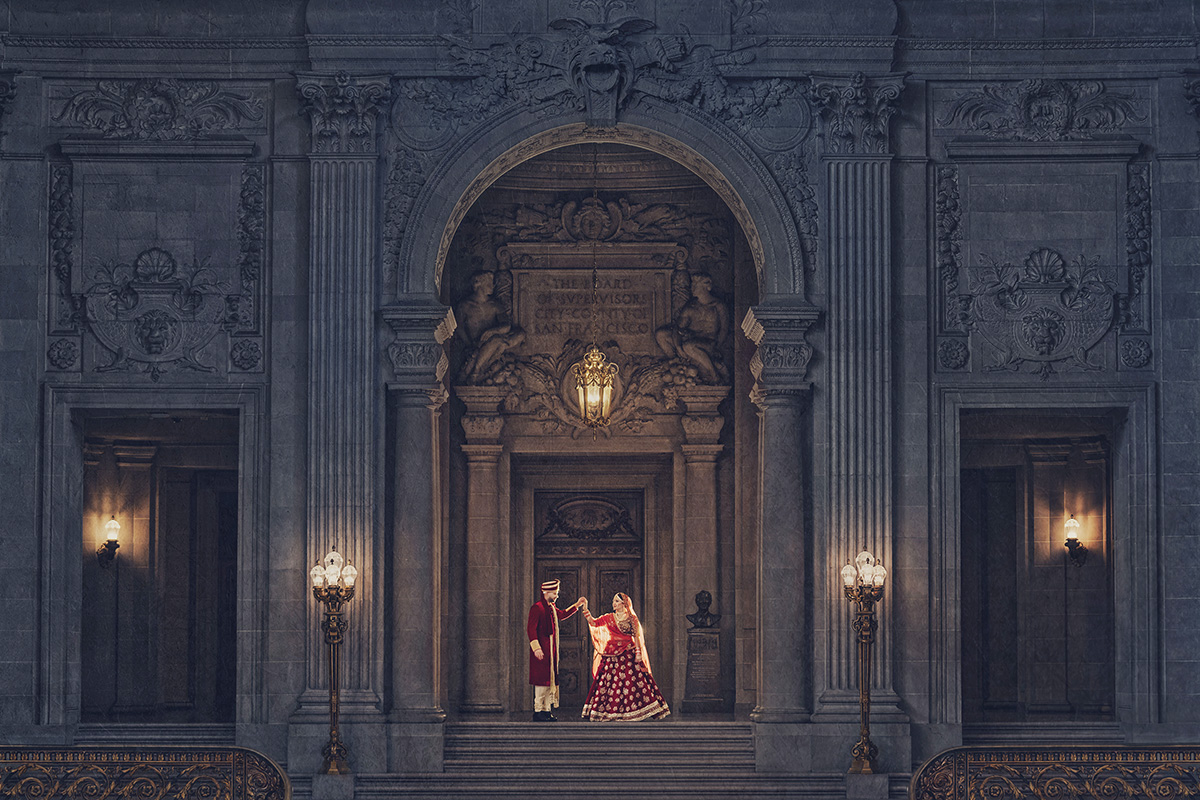Finding Wedding Bliss
You can secure a six-figure income from wedding photography.
• March 2022 issue
Wedding photography has become increasingly competitive as more people enter the field. In some ways, wedding photography has become part of the gig economy, with thousands of shutterbugs running profitable sidelines as weekend warriors. Today’s wedding photographers have ready access to education and game-changing technology, helping them produce better work and offer innovative options.
With more people doing better work, it’s difficult to stand out as a wedding photographer. And for full-time wedding photographers, the deck can seem stacked against them. With higher expenses and the need to charge more to be profitable, full timers can find themselves at a competitive disadvantage when facing off against part-time competitors who don’t necessarily have comparable overhead expenses.

However, there may be more potential to build a healthy six-figure income from full-time wedding photography than ever before. The keys to success, says wedding photographer and educator Michael Anthony, M.Photog., are to improve your craft continually while leveraging the distinct advantages that full-time professional photographers inherently possess. Anthony, who owns a successful studio in Santa Clarita, California, has researched the field extensively for a program he teaches called “Making a Six-Figure Income Shooting Weddings.” The core lessons he discovered center on the premise of offering ever-increasing value as well as improving internal processes to be more competitive.
“Full-time photographers need to be able to offer a better client experience,” says Anthony.
“That’s really what it comes down to. Providing quicker response times, having a location for clients to view their images, offering products like intricately designed albums—these are the kinds of things full-time photographers can turn to their advantage in this competitive field.”

UPGRADE SERVICE
High-end clients want high-end service, and they’re willing to pay for it. Today’s most successful wedding photographers offer a level of service that helps their clients get excited about the process while also building a strong client-photographer relationship. Good service includes multiple touchpoints, like planning sessions, engagement sessions, reveal sessions, and periodic check-ins.
Modern communications technology and shifting attitudes toward online meetings have made it easier than ever to connect with clients. In-person interaction is often still preferable, but photographers who mix in Zoom meetings or other virtual touchpoints can maintain a good connection while making clients’ lives easier. These days, photographers can create a great virtual presentation from anywhere, allowing for a professional, personalized experience for clients regardless of your business location.

ENHANCE PRODUCTS
The ability to sell products and do sales sessions is essential for upscale wedding bookings. High-quality, well-designed products are a major differentiator in the crowded wedding photography marketplace, particularly when they involve an extra degree of artistry that’s unique to you and your studio.
“We’ve transitioned to larger albums that really tell the story of the wedding day from start to finish instead of just a picture book,” says Anthony. “We design these albums as the complete story, present them to our clients, and let them pick what to keep or remove. So, it becomes an exercise in subtraction for them to remove what they don’t want from the predesigned story.”
As a result, Anthony has found that clients have been upgrading their album to include everything they want. They’re more likely to buy a more complete story when they see it designed versus having to imagine that story from a disparate collection of images. The extra up-front investment in design time has paid off substantially.

Other profitable shifts over the past few years include non-standard prints. Anthony’s research and experience show that traditional wall prints have lost some luster, while today’s consumers love acrylics, metal prints, and to a lesser extent, canvases. “For us photographers, these aren’t new items; they’ve been around for years, but as a bride getting married, they’re fairly unique, and that’s what people want,” he says.
It’s not just a matter of people wanting something different. Anthony notes that there is an extra perception of value surrounding photography of major life events. “People are looking to display it in a way that stands out,” he says.

AMPLIFY RELATIONSHIP MARKETING
Even in our connected world of social media and online communications, the fundamental rules of marketing for photographers haven’t changed over the past 50 years, says Anthony. You want to be seen in as many places as possible. You want your market to view you as an expert in what you do. And you want to build meaningful relationships with your ideal clients.
For many photographers, relationship marketing and referral marketing are more powerful than all the paid marketing avenues combined. You can build relationships online, but you can also follow the tried-and-true offline practices of being active in your community, joining neighborhood groups, contributing to local charities, and networking with complementary vendors. “Take that extra step that other photographers aren’t taking,” advises Anthony. “One thing that is different is that you have to work twice as hard today as five years ago, and five years from now there will likely be another doubling of effort because there is more competition. But there’s more opportunity, too. You just have to work harder to stand out.”

STREAMLINE WORKFLOW
Leveraging technology is important for maximizing studio efficiency and reducing overhead costs. Among the many organizational options available to photographers, the one application that Anthony urges every photographer to set up is a customer relationship management (CRM) system. These systems not only help you keep your contacts organized, they can also provide options for automating repetitive tasks such as appointment scheduling. In addition, you can set up automated workflows when a client takes a specified action. For example, when a client books a wedding, the system can automatically trigger an email sequence providing follow-up info and reminders.
“Our studio does about 120 weddings in a normal year, but despite that volume we only have two full-time employees,” says Anthony. “The reason we’re able to keep our staff that small is because of automation. Our CRM helps us automate a lot of the normal sales process, from booking through sending galleries for image previews.”

The CRM also helps Anthony identify inefficiencies in his process. By running different reports, he can see how his studio’s key performance indicators are stacking up. For example, if he sees a drop in the rate of bookings compared to the number of consultations, he knows he needs to work on that area of the business.
Critically, a good CRM also improves the client experience. When simple tasks like scheduling meetings can be automated, staff time is freed up to focus on client interactions. And when the entire system is more organized and clearly laid out, client anxiety is reduced and they can better focus on the fun, artistic side of the process.
.jpg)
OPTIMIZE THE EXPERIENCE
“If you’re focusing on improving one thing in 2022, improve the client experience,” suggests Anthony. “That will tie everything together. If you provide a good experience, business will grow from word-of-mouth referrals, and that’s the best advertising we can do.”
A great experience is what clients will remember as much as anything else you provide, and that goes a long way toward helping you stand out in a crowded field. “It’s not necessarily harder to book clients today than in years past, but it has become more of a challenge to stand out,” explains Anthony. “It’s a crowded market and people can go almost anywhere to find their photographer. However, for the photographers who do stand out, there is a good market because people are willing to pay a premium for a unique experience they can’t get anywhere else.”
Jeff Kent is editor-at-large.



